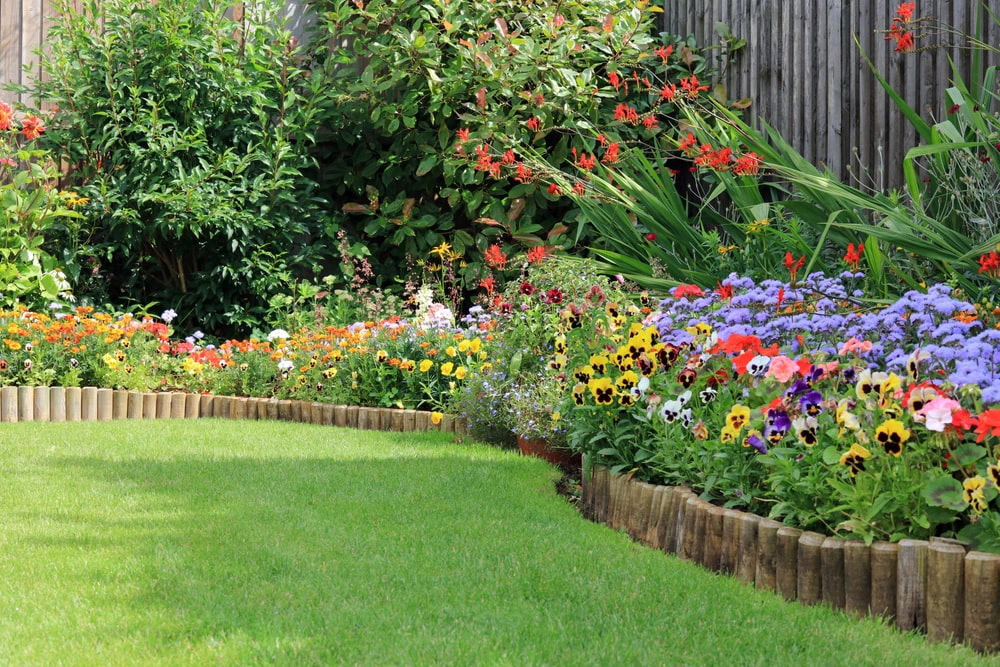Garden Edging Ideas for a Tidy Garden

Garden bed edging keeps mulch where it belongs and makes your yard look tidy. But with so many garden edging ideas to choose from, you may need a little inspiration as you decide which type is best for you. Here, we’ll explore some creative garden edging ideas and the pros and cons of each.
Table of Contents:
Benefits of Garden Edging
The purpose of edging is to create a crisp, clean barrier between your lawn and flower beds. The right edging material can make your yard look pristine and well-groomed. It can also help prevent stray grass and control weeds from invading your carefully cultivated flowers.
There are many options for edging your garden, depending on the look and feel you want to achieve. You may also base your decision on the cost, durability, installation difficulty, and maintenance required. Here are four different edging styles to consider.
Trench Edging
-(1).webp)
For a natural-looking border, consider trench edging. This involves simply cutting a clean perpendicular edge around the perimeter of the lawn using a spade, half-moon edger, or manual rotary. (For long borders, consider renting a mechanized tool with a circular blade.) As you mulch the garden bed, slope the wood chips downward to create a two- to three-inch trench near the grass line. This creates a crisper edge than laying the mulch flush with the grass.
Pros:
- Lowest cost
- Easiest type of edging to create
Cons:
- Low durability
- Requires ongoing trimming to maintain the look
Metal or Plastic Edging
-(1).webp)
This option creates more physical separation between your grass and garden beds. The installation process begins the same as trench edging. Then, instead of leaving the trench as-is, you install a long strip of edging material on the border of the grass. Rigid, lightweight, and rust-resistant aluminum is ideal for this purpose. Plastic is a lower-cost alternative with a similar appearance.
Pros:
- Relatively low cost
- Easy to install
Cons:
- Can be unattractive if not installed properly
- Needs occasional maintenance to avoid developing a rundown look
Bricks or Concrete Pavers
-(1).webp)
To create a decorative border around your garden beds, consider installing bricks or concrete pavers. Choose from numerous colors and styles to create just the right look. You can also decide how to install the pavers—above the soil for a raised look or entrenched in the earth so they’re flush with the grass.
Pros:
- Effective against grass creep
- Highly durable with minimal maintenance
Cons:
- Higher cost
- May require professional installation
Raised Stone Border
.webp)
If you really want to make a statement, consider putting a raised stone border around your garden bed. The idea is to elevate your flowers to the level of the short stone wall surrounding them. Lifting your flowers about a foot off the ground isn’t just aesthetically pleasing—it also saves you from bending down as far when you tend your garden.
Pros:
- Visually striking
- Prevents grass creep
- Ideal for sloped landscapes
Cons:
- Highest cost option
- Less suitable for existing flower beds
- May require professional hardscape installation
Start Your Next Garden Bed Edging Project Today
Bordering your lawn with garden edging is a simple way to reflect the effort you put into your landscaping. Let The Grounds Guys® help you with our professional garden edging services! Reach out to The Grounds Guys location nearest you and request a free job estimate to get started.
 Click to call
Click to call


